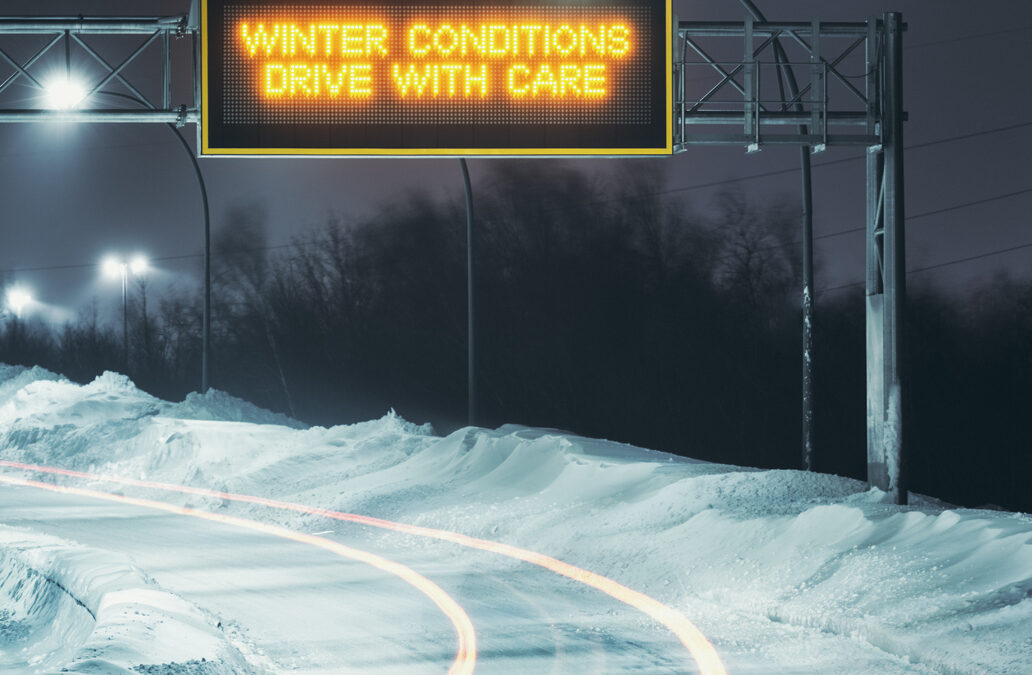Taking a few precautions can ensure that you make it through the winter safely
Key takeaways:
- Winter driving is a unique challenge
- Taking specific precautions can significantly enhance safety
- Having the right insurance policy matters!
Winter driving is a challenge that often leads to an uptick in collisions. The U.S. Department of Transportation reports that 24% of weather-related accidents occur on snowy, icy, or slushy roads, and these conditions cause injury to more than 116,800 people annually.
Beyond injury, getting into an accident can lead to higher insurance premiums, not to mention the hassle of repairing or replacing a vehicle.
Learning how to drive in winter conditions can significantly decrease personal risk on the road, so here’s a look at some driving tips for the icy, snowy roads in New York.
Get snow tires
The first step to safe winter driving is investing in some snow tires. On average, snow tires stop vehicles six feet shorter on ice than their all-season counterparts, according to Consumer Reports. They also take 22 fewer feet to accelerate from five to 20 miles per hour.
Snow tires can be lifesavers because they help cars brake fast under the worst possible conditions.
Reduce your speed
Slowing down on the roads is vital—the slower a vehicle travels, the more control the driver has over it. When you have less traction on the street, going at a slower speed puts less onus on your tires to grip the road when slowing or stopping.
It’s also a good idea to accelerate and decelerate slowly when driving in the snow. When you slam on the brakes, your vehicle is more likely to lose control, even if you have an antilock braking system. The same goes for accelerating. When you give the car too much gas, it can cause the wheels to spin because of the lack of traction.
Driving too fast and treating your car like you would in the summer is a recipe for disaster in icy conditions.
Be careful on hills
Hills are perhaps the most dangerous place to drive in the winter because they require more traction than a flat road.
When driving up a hill, you’ll want to get a bit of momentum going at the bottom, so you don’t have to give the vehicle too much gas to reach the top. The more pressure you apply to the gas pedal, the more likely it becomes that you’ll spin your wheels. Keep steady pressure on the gas all the way up the hill to avoid this situation.
Going down a hill is even more challenging because you run the risk of sliding. Much like when going up a hill, try to maintain an even speed. You’ll likely have to use your brakes to sustain that speed, but try not to slam on them because that can put you into a slide. Take it slow to give yourself the best chance of reaching the bottom safely.
Leave time and space
When driving in ideal summer conditions, you’ll likely leave at least two or three seconds between your car and the one in front of you. In snowy or icy conditions, giving five or six seconds is a good idea.
If the vehicle in front of you suddenly stops, you’ll be glad that you left that extra space. Even with snow tires, it takes 30 feet to come to a complete stop when driving on an icy road, making collision-avoidance extremely challenging.
Drivers should also plan ahead a little bit and give extra time to reach their destination. If a drive would typically take you 20 minutes, give yourself half an hour to get there. That way, you won’t end up rushing and putting yourself in danger.
Stay away from the plow
Plows are everywhere after a snowfall, helping to get the roads into better condition. However, these vehicles are also a hazard because they’re large objects that take up a lot of space on the roadway.
Remember that plows weigh more than ten tons and will do a lot of damage to your smaller car if you hit one. They also kick up a cloud of snow that reduces visibility. The same goes for tractor trailers, which can significantly lower visibility on snowy roads.
When you see a plow on the road, slow down and give it plenty of room to do its job. Not only will staying far behind it provide a safer, clearer road to drive on, but it prevents numerous accidents associated with trying to pass one.
Always plan ahead
One of the best tips for motorists in the winter is to stay home when travel isn’t necessary. Packing the car with safety equipment like a shovel, warm clothing, a flashlight, and some sand is also advisable, just in case you get stuck somewhere.
Planning with your insurance coverage is a good idea, too. NICRIS Insurance can assist as you select the right policy to cover you and your vehicle through New York’s snowy winters. Contact us to learn more or apply for a personalized quote online.

